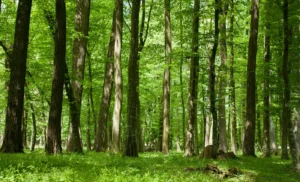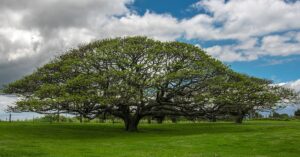Tree Removal Laws in Scotland: A Comprehensive Guide
When you’re looking to remove trees from your property in Scotland, it’s crucial to understand the complex web of regulations that govern this process. Whether you’re a property developer, homeowner, or simply interested in Scottish forestry management, navigating these laws can be challenging for Americans with property interests overseas. Scotland’s rich natural heritage and commitment to environmental conservation have led to the development of robust legal frameworks designed to protect its trees and woodlands.
This comprehensive guide will walk you through everything you need to know about tree removal laws in Scotland, from understanding the basic legal framework to obtaining the necessary permissions and avoiding potential penalties. We’ll explain how these regulations might differ from what you’re accustomed to in the United States and provide practical advice for compliance.
Understanding Scotland’s Tree Protection Framework
Scotland’s approach to tree protection reflects its commitment to preserving natural resources while allowing for sustainable development. Unlike the United States, where tree regulations often vary significantly from state to state and even between municipalities, Scotland has a more unified national approach that’s supplemented by local policies.
The Legal Foundation of Tree Protection in Scotland
The primary legislation governing tree protection in Scotland includes the Town and Country Planning (Scotland) Act 1997 and the Forestry and Land Management (Scotland) Act 2018. These laws establish the fundamental framework for how trees are protected and when removal is permitted.
The Forestry and Land Management (Scotland) Act 2018 replaced the previous Forestry Act 1967 and transferred the powers of the Forestry Commissioners in Scotland to Scottish Ministers. This legislative change reflected Scotland’s desire to tailor forestry policy more specifically to Scottish needs and priorities.
Under these laws, Scottish Forestry (formerly Forestry Commission Scotland) is the government agency responsible for regulating forestry activities, including tree felling. Their role involves implementing policies, providing guidance, and enforcing regulations related to tree management across Scotland.
For Americans who might be more familiar with the U.S. Forest Service or state-level departments of natural resources, understanding that Scottish Forestry operates as both a regulatory body and a source of expert guidance is important. You can find detailed information about their role and services on the official Scottish Forestry website: https://forestry.gov.scot/.
Tree Preservation Orders (TPOs)
One of the most significant mechanisms for protecting trees in Scotland is the Tree Preservation Order (TPO). Similar to heritage tree ordinances in some U.S. states, TPOs provide legal protection for individual trees or groups of trees that are considered particularly valuable to their local environment.
A TPO makes it an offense to cut down, top, lop, uproot, willfully damage, or willfully destroy protected trees without permission from the local planning authority. These orders can be applied to trees of any size, type, or species and can cover individual trees, groups, or entire woodland areas.
Local planning authorities (similar to county or city planning departments in the U.S.) are responsible for creating and enforcing TPOs. They assess trees based on several criteria, including:
- Visual amenity and landscape contribution
- Historical or cultural significance
- Ecological value
- Future potential
If you’re considering purchasing property in Scotland, it’s wise to check whether any trees on the land are subject to TPOs before finalizing your plans. This information can be obtained from the relevant local planning authority’s register of TPOs, which is available for public inspection.
Conservation Areas and Special Protection
Beyond TPOs, trees in Scotland may also be protected if they’re located within designated conservation areas. These areas are typically established to preserve places of architectural or historic interest, but the designation extends protection to all trees above a certain size within their boundaries.
In conservation areas, you must give the local planning authority six weeks’ notice before carrying out work on trees that have a trunk diameter of more than 75mm when measured at 1.5m from ground level (or more than 100mm if reducing the number of trees to benefit the growth of other trees). This notice period allows the authority to consider whether a TPO should be placed on the tree to prevent the work.
Special protections also apply to trees in other designated areas, such as:
- Sites of Special Scientific Interest (SSSIs)
- Special Areas of Conservation (SACs)
- National Scenic Areas
- Ancient woodlands
For Americans familiar with U.S. national parks or wilderness areas, these Scottish designations serve similar conservation purposes but operate under different legal frameworks and with varying levels of restriction.
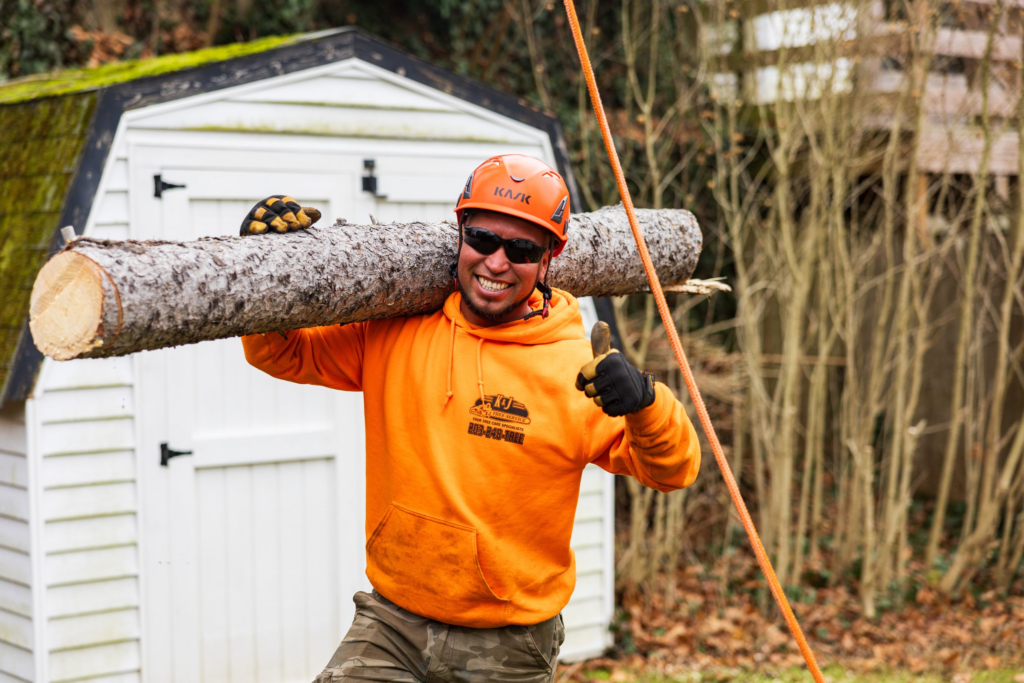
The Felling License System
Central to Scotland’s tree removal regulations is the felling license system, which differs significantly from most U.S. jurisdictions where permits for tree removal on private property are often less stringent outside of urban areas.
When Is a Felling License Required?
In Scotland, you generally need permission from Scottish Forestry to fell growing trees. This permission typically comes in the form of a felling license, though there are some exceptions to this requirement.
A felling license is usually required if you want to cut down trees with a total volume of more than 5 cubic meters in any calendar quarter (three-month period). However, if you’re selling more than 2 cubic meters of the felled timber, a license is required regardless of the total volume.
This is more restrictive than many U.S. states where private landowners often have greater latitude to remove trees on their own property, particularly in rural areas. The Scottish system prioritizes oversight of forestry activities regardless of land ownership.
Key Exemptions from Felling License Requirements
Not all tree felling activities require a license. Understanding these exemptions can help you determine whether your planned tree work falls within the allowed activities. The main exemptions include:
Location-Based Exemptions:
- Trees in gardens, orchards, churchyards, or public open spaces
- Trees within an approved development that has planning permission
- Trees in a city, town, or village that are not covered by a TPO or located in a conservation area
Size and Volume-Based Exemptions:
- Felling trees with a diameter not exceeding 10 centimeters (measured at 1.3 meters above ground level)
- Felling trees with a diameter not exceeding 15 centimeters to improve the growth of other trees
- Felling a total volume of less than 5 cubic meters in a calendar quarter (unless you’re selling more than 2 cubic meters)
Purpose-Based Exemptions:
- Removing dead, dangerous, or diseased trees
- Preventing or abating a nuisance (such as trees interfering with utility lines)
- Complying with an Act of Parliament
- Preventing immediate danger
Even with these exemptions, it’s advisable to maintain evidence (such as photographs or arborist reports) that demonstrates why you believed a tree qualified for exemption, particularly when claiming that a tree was dangerous or diseased.
The Application Process for Felling Licenses
If your planned tree removal doesn’t fall under any exemptions, you’ll need to apply for a felling license. The application process involves several steps and considerations:
- Application Preparation: You’ll need to complete an application form, which requires details about the location, species, size, and number of trees to be felled, as well as your plans for replanting or restocking the area.
- Supporting Documentation: Your application should include maps showing the location of the trees and the boundaries of your property, along with any relevant environmental information.
- Public Notification: Once submitted, your application will be placed on a public register for 28 days, during which time members of the public can comment on your proposal.
- Assessment: Scottish Forestry will assess your application against various criteria, including environmental impact, landscape considerations, and compliance with the UK Forestry Standard.
- Decision: You can typically expect a decision within 3 months, though complex applications may take longer.
- Conditions: If approved, your license will likely include conditions, particularly regarding restocking or replanting requirements.
The felling license application form and guidance can be accessed through the Scottish Forestry website: https://forestry.gov.scot/support-regulations/felling-permissions.
Restoration and Replanting Requirements
A key aspect of Scotland’s approach to forestry management is the emphasis on sustainability through restocking or replanting requirements. When a felling license is granted, it typically includes conditions related to restoring the woodland area.
These conditions might specify:
- The number and species of trees to be planted
- The timeframe within which replanting must occur
- Ongoing maintenance requirements to ensure successful establishment
This approach aligns with sustainable forestry practices and reflects Scotland’s commitment to maintaining and expanding its woodland cover. It’s similar to timber harvest plans in some U.S. states but is applied more consistently across Scotland.
For Americans used to less stringent replanting requirements, it’s important to factor these restoration costs into your budget when planning for tree removal in Scotland.
Tree Removal in Protected Contexts
Beyond the general felling license system, additional considerations apply when dealing with trees in specially protected contexts. These contexts include trees covered by TPOs, trees in conservation areas, and trees that provide habitat for protected wildlife.
Removing Trees Covered by TPOs
If you want to carry out work on a tree protected by a TPO, you must submit an application to the local planning authority. This application is separate from the felling license process and is handled by the local council rather than Scottish Forestry.
Your application should include:
- Detailed descriptions of the proposed work
- Information about why the work is necessary
- An assessment of the impact on the tree’s health and appearance
- Any proposals for replacement planting
The local authority will consider various factors when assessing your application, including the health and condition of the tree, its amenity value, and the reasons for the proposed work. They may:
- Grant consent unconditionally
- Grant consent subject to conditions (such as replacement planting)
- Refuse consent
It’s worth noting that decisions regarding TPO applications can be appealed to the Scottish Ministers if you disagree with the local authority’s determination.
Trees in Conservation Areas
As mentioned earlier, trees in conservation areas benefit from protection similar to TPOs, even if they aren’t specifically covered by an order. The key difference is the notification process.
Rather than requiring explicit permission, you must notify the local planning authority at least six weeks before carrying out work on trees in a conservation area. During this period, the authority may:
- Allow the work to proceed as notified
- Place a TPO on the tree and require you to submit a formal application
- Negotiate modifications to your proposal
This notification requirement provides a balance between protecting trees of potential value and allowing property owners reasonable freedom to manage trees that don’t merit individual protection.
Protected Species Considerations
An often-overlooked aspect of tree removal in Scotland is the potential presence of protected wildlife. Various species of birds, bats, and other wildlife are protected under the Wildlife and Countryside Act 1981 and the Conservation (Natural Habitats, &c.) Regulations 1994.
These protections can affect tree removal in several ways:
- It’s an offense to intentionally or recklessly disturb nesting birds, which means tree work is often restricted during the nesting season (typically March to August).
- All bat species and their roosts are protected, making it illegal to damage or destroy a bat roost even if the bats aren’t present at the time.
- Other protected species, such as red squirrels or certain insects, might also use trees as habitat.
Before proceeding with tree removal, you should arrange for appropriate wildlife surveys if there’s any possibility of protected species being present. If protected species are found, you may need to:
- Adjust the timing of the work to avoid disturbance
- Obtain a license from NatureScot (formerly Scottish Natural Heritage)
- Implement specific mitigation measures
This emphasis on wildlife protection is consistent with both U.S. and Scottish approaches to environmental conservation, though the specific species and legal mechanisms differ.
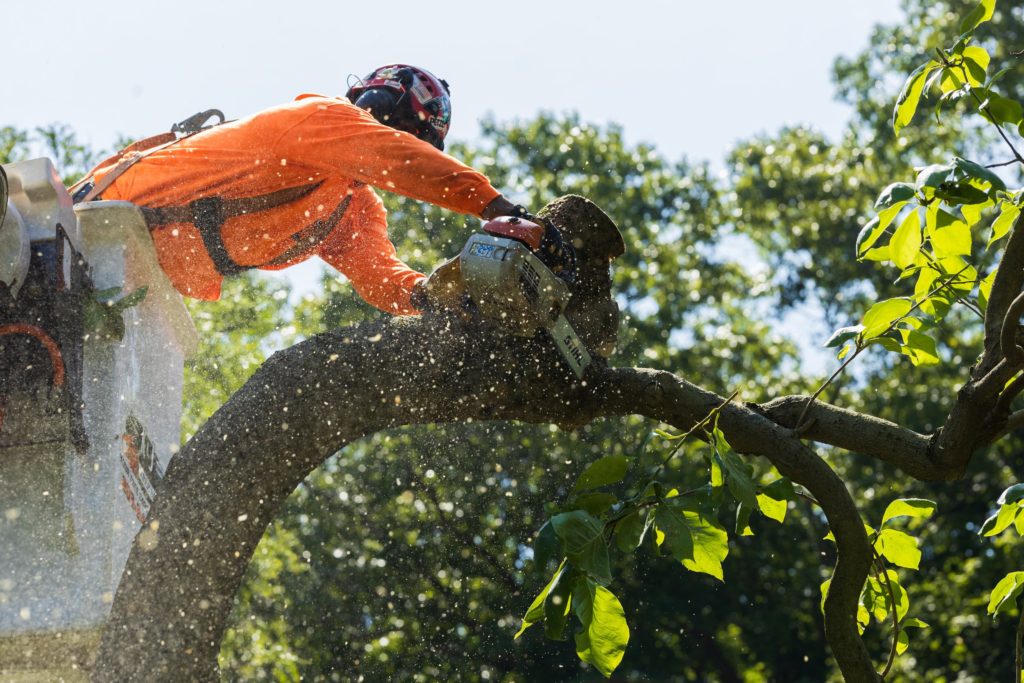
Penalties and Enforcement
Scotland takes unauthorized tree removal seriously, with substantial penalties for non-compliance. Understanding the potential consequences of breaking tree protection laws is essential for anyone considering tree work in Scotland.
Fines and Prosecution for Unauthorized Felling
Felling trees without the required license or in contravention of a TPO can result in significant penalties. These include:
- For unauthorized felling: Fines of up to £5,000 per tree (approximately $6,500 USD) or twice the value of the tree, whichever is higher
- For TPO violations: Unlimited fines that reflect the tree’s value and the potential profit from development enabled by its removal
In cases of serious or persistent violations, criminal prosecution is possible, potentially resulting in criminal records that could affect future travel and business opportunities.
Restocking Notices and Remedial Measures
Beyond financial penalties, Scottish Forestry and local planning authorities have the power to issue restocking notices. These legally binding orders require landowners to replant trees that were illegally removed.
A restocking notice typically specifies:
- The area to be restocked
- The species, size, and number of trees to be planted
- The timeframe for completion
- Maintenance requirements to ensure successful establishment
Failure to comply with a restocking notice is itself an offense, potentially leading to additional fines and even court orders.
Recent Enforcement Cases
Several high-profile enforcement cases in recent years demonstrate Scotland’s commitment to protecting its trees. These examples serve as cautionary tales:
- In 2019, a property developer in Edinburgh was fined £18,000 (approximately $23,400 USD) for removing three protected mature beech trees to improve views from new apartments.
- A landowner in the Highlands received a £24,000 (approximately $31,200 USD) fine in 2021 for clearing an area of ancient woodland without a license.
- In 2022, a restocking notice required the planting of 15,000 trees on an estate where unauthorized felling had taken place to create grazing land.
These cases illustrate that Scottish authorities are willing to pursue significant penalties for violations, regardless of the perpetrator’s status or the perceived commercial benefits of tree removal.
Comparing Scottish and U.S. Tree Removal Regulations
For Americans with property interests in Scotland, understanding the differences between Scottish and U.S. approaches to tree protection can help avoid unintentional violations and ensure compliance with local requirements.
Philosophical and Structural Differences
The fundamental philosophies underlying tree protection differ somewhat between Scotland and the United States:
Scotland:
- Emphasizes national-level protection with consistent standards
- Places high value on trees as part of cultural heritage and environmental resources
- Takes a presumptive approach against tree removal unless justified
- Imposes strong replanting requirements to maintain woodland cover
United States:
- Features highly variable regulation from state to state and locality to locality
- Often focuses protection on specimen or heritage trees rather than general tree cover
- In many areas, emphasizes property owners’ rights to manage trees on their land
- Typically has less stringent replanting requirements outside of commercial forestry
These philosophical differences are reflected in the regulatory structures and enforcement mechanisms in each country.
Regional Variations within Scotland
While Scotland’s tree protection framework is more unified than the patchwork of regulations in the U.S., there are still regional variations in how local planning authorities implement and enforce tree protection measures.
Urban areas like Edinburgh and Glasgow tend to have more stringent protections and enforcement, particularly for street trees and trees in conservation areas. Rural areas may focus more on sustainable forestry management and woodland protection rather than individual trees.
The Highlands and Islands region, with its unique ecosystems and challenges, often takes a distinctive approach that balances ecological concerns with the needs of remote communities.
Understanding these regional nuances is important for property owners in different parts of Scotland.
Practical Implications for American Property Owners
If you’re an American owning or considering purchasing property in Scotland, several practical considerations should guide your approach to tree management:
- Due Diligence: Before purchasing property, investigate whether any trees are protected by TPOs or conservation area designations.
- Professional Guidance: Engage Scottish-based forestry consultants or arborists who understand local regulations rather than relying on U.S.-based expertise.
- Conservative Approach: When in doubt about whether permission is required, err on the side of seeking authorization rather than risking penalties.
- Documentation: Maintain thorough records of all tree work, including professional assessments, applications, approvals, and evidence supporting any claimed exemptions.
- Cultural Awareness: Recognize that the Scottish public generally values tree protection highly, and unauthorized tree removal may generate negative community reactions beyond legal consequences.
By approaching tree management with awareness of these differences, you can avoid potential legal issues while contributing positively to Scotland’s environmental conservation efforts.
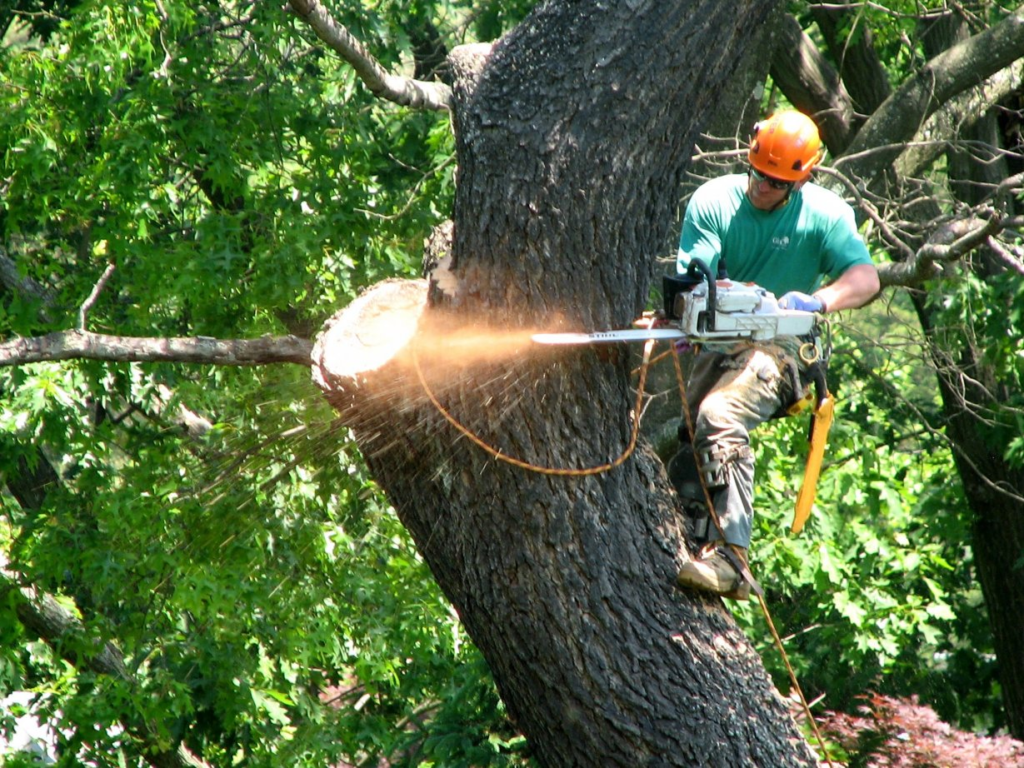
Data and Statistics on Scottish Forestry
Understanding the context of Scotland’s tree protection laws requires some knowledge of the country’s forestry resources and management trends. The following tables provide key data that highlight why Scotland places such importance on tree protection.
Table 1: Scottish Woodland Coverage by Type (2023)
| Woodland Type | Area (hectares) | Percentage of Total Woodland | Percentage of Scotland’s Land Area |
|---|---|---|---|
| Conifer | 1,054,000 | 74.3% | 13.4% |
| Broadleaf | 365,000 | 25.7% | 4.6% |
| Total | 1,419,000 | 100% | 18.0% |
Source: Forestry Statistics 2023, Scottish Forestry
This table illustrates that while Scotland has significant woodland resources, they cover only 18% of the land area, which is below the European average of 38%. This relatively limited coverage helps explain the emphasis on protection and expansion of woodland areas through strict controls on tree removal.
Table 2: Tree Removal Applications and Outcomes (2021-2023)
| Year | Felling License Applications | Approved | Approved with Conditions | Rejected | Average Processing Time (days) |
|---|---|---|---|---|---|
| 2021 | 972 | 284 | 612 | 76 | 62 |
| 2022 | 1,045 | 302 | 661 | 82 | 68 |
| 2023 | 1,134 | 318 | 728 | 88 | 71 |
Source: Scottish Forestry Annual Reports, 2021-2023
This data reveals several important trends in tree removal governance in Scotland:
- The majority of applications (approximately 88-89%) are approved, though most come with conditions.
- The number of applications has been steadily increasing, potentially reflecting increased development pressure.
- Processing times have been gradually increasing, suggesting growing scrutiny of applications.
Table 3: Enforcement Actions for Unauthorized Tree Removal (2019-2023)
| Year | Warning Notices Issued | Restocking Notices Issued | Prosecutions | Total Fines Imposed (£) | Area Required to be Restocked (hectares) |
|---|---|---|---|---|---|
| 2019 | 127 | 43 | 12 | 183,000 | 87 |
| 2020 | 114 | 38 | 8 | 156,000 | 73 |
| 2021 | 142 | 51 | 15 | 267,000 | 112 |
| 2022 | 168 | 62 | 19 | 342,000 | 143 |
| 2023 | 193 | 71 | 24 | 418,000 | 165 |
Source: Scottish Forestry Enforcement Reports, 2019-2023
This enforcement data demonstrates that:
- Enforcement actions have been increasing substantially over the five-year period.
- Financial penalties have more than doubled, reflecting a toughening stance on violations.
- The area required to be restocked has been growing, emphasizing the restoration component of enforcement.
These statistics highlight both the seriousness with which Scottish authorities approach tree protection and the increasing emphasis on enforcement in recent years.
Future Trends in Scottish Tree Protection
Scotland’s approach to tree protection continues to evolve, with several emerging trends likely to shape the regulatory landscape in coming years. Understanding these trends can help property owners anticipate future requirements and align their tree management practices accordingly.
Climate Change Response and Carbon Sequestration
Scotland has set ambitious climate targets, including achieving net-zero greenhouse gas emissions by 2045. Trees play a crucial role in this strategy through carbon sequestration.
Recent policy developments suggest that future tree protection regulations will increasingly emphasize:
- Enhanced protection for existing mature trees based on their carbon storage value
- More stringent replacement requirements for removed trees, potentially with higher ratios than 1:1
- Preferences for native species that support biodiversity while sequestering carbon
- Integration of tree preservation with broader climate adaptation measures
The Scottish Government’s Climate Change Plan Update (available at https://www.gov.scot/publications/securing-green-recovery-path-net-zero-update-climate-change-plan-20182032/) provides insights into how forestry and tree protection will factor into climate strategies.
Biodiversity Enhancement Focus
Aligned with international efforts to address biodiversity loss, Scotland is increasingly viewing trees not just as individual specimens but as key components of ecological networks.
This perspective is likely to influence tree protection through:
- Expanded protections for trees that serve as wildlife corridors or stepping stones between habitat patches
- Greater scrutiny of removal applications for trees that support rare or declining species
- Integration of tree protection with Scotland’s Biodiversity Strategy
- Potential new protections for trees based on their ecological rather than aesthetic or historical value
These changes reflect a growing understanding of trees as ecological assets rather than simply landscape features.
Technology in Tree Management and Enforcement
Technological advances are changing how trees are monitored and protected in Scotland:
- Satellite and drone imagery is increasingly used to detect unauthorized felling
- Digital mapping of TPOs and conservation areas improves public access to information
- Online application systems streamline the permission process while improving data collection
- Mobile applications help property owners identify protected trees and understand regulations
For property owners, these technological developments offer both benefits (easier access to information and application processes) and increased accountability (improved monitoring and enforcement).
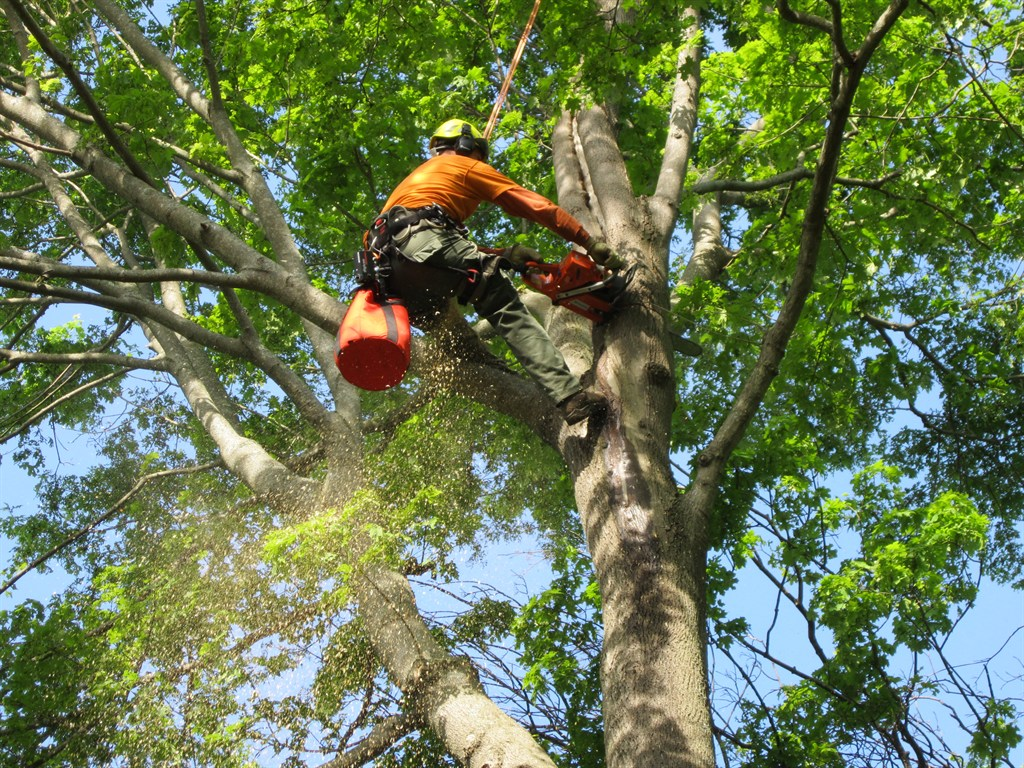
Practical Guidance for Property Owners
Based on the legal frameworks and trends discussed, here are practical recommendations for property owners in Scotland, particularly those accustomed to U.S. tree regulations.
Best Practices for Tree Removal Planning
When considering tree removal on your Scottish property, following these best practices can help ensure compliance and minimize complications:
- Start Early: Begin the permission process at least 6 months before your planned removal date to accommodate potential delays.
- Consult Professionals: Engage qualified Scottish arborists or forestry consultants to assess your trees and guide you through the regulatory process.
- Document Thoroughly: Maintain comprehensive records of all tree conditions, professional advice, applications, and communications with authorities.
- Consider Alternatives: Explore whether pruning or other tree management approaches might address your concerns without requiring removal.
- Plan for Replacement: Develop a thoughtful replanting strategy that meets or exceeds minimum requirements, potentially incorporating native species that support local biodiversity.
- Coordinate with Neighbors: Discuss your plans with adjacent property owners early to address potential concerns before they become formal objections.
- Engage Constructively: Approach discussions with planning authorities as collaborative problem-solving rather than adversarial interactions.
By following these practices, you can navigate Scotland’s tree protection system more effectively while demonstrating your commitment to responsible environmental stewardship.
Finding Qualified Assistance
Navigating Scotland’s tree protection regulations often requires professional assistance. Key resources include:
- Arboricultural Association Approved Contractors: Find qualified arborists through their directory at https://www.trees.org.uk/
- Institute of Chartered Foresters Members: Locate forestry consultants with professional credentials at https://www.charteredforesters.org/
- Planning Aid Scotland: Access free, impartial advice on planning matters, including tree protection, at https://www.pas.org.uk/
- Scottish Forestry Regional Offices: Contact local offices for guidance on felling licenses and forestry regulations
These professionals can provide valuable expertise on the technical, legal, and ecological aspects of tree management in Scotland.
Ongoing Management of Trees on Your Property
Beyond addressing immediate removal needs, developing a long-term tree management plan for your Scottish property can help you avoid emergency situations while enhancing your property’s environmental value:
- Regular Assessments: Arrange for professional inspections every 3-5 years to identify potential issues before they become emergencies.
- Proactive Maintenance: Address minor issues through pruning and other interventions before they necessitate removal.
- Succession Planning: Gradually introduce new trees to replace aging specimens, ensuring continuous tree cover and avoiding sudden landscape changes.
- Record Keeping: Maintain an inventory of significant trees on your property, including species, condition, and protection status.
- Weather Preparedness: Be particularly vigilant after severe weather events, which may create hazardous conditions requiring prompt attention.
This proactive approach not only ensures compliance with regulations but also maximizes the environmental and aesthetic benefits that trees provide to your property.
Conclusion
Scotland’s tree removal laws reflect the nation’s deep commitment to environmental conservation, climate action, and landscape preservation. While these regulations may initially seem restrictive compared to many U.S. jurisdictions, they represent a balanced approach to managing an important natural resource.
By understanding the legal framework, planning appropriately, engaging qualified professionals, and maintaining a proactive approach to tree management, you can successfully navigate Scotland’s tree protection system while enjoying the many benefits that Scotland’s natural environment offers.
Remember that these regulations exist not simply as bureaucratic hurdles but as expressions of Scotland’s values regarding environmental stewardship—values that many Americans increasingly share. By approaching tree management with respect for these principles, you can contribute positively to Scotland’s environmental legacy while avoiding the significant penalties associated with non-compliance.
Whether you’re managing existing Scottish property or considering a purchase, taking time to understand these regulations will serve you well in your Scottish property journey.
Disclaimer: While this article provides a comprehensive overview of tree removal laws in Scotland, regulations may change over time. Always consult with qualified professionals and relevant authorities before undertaking tree work in Scotland.

